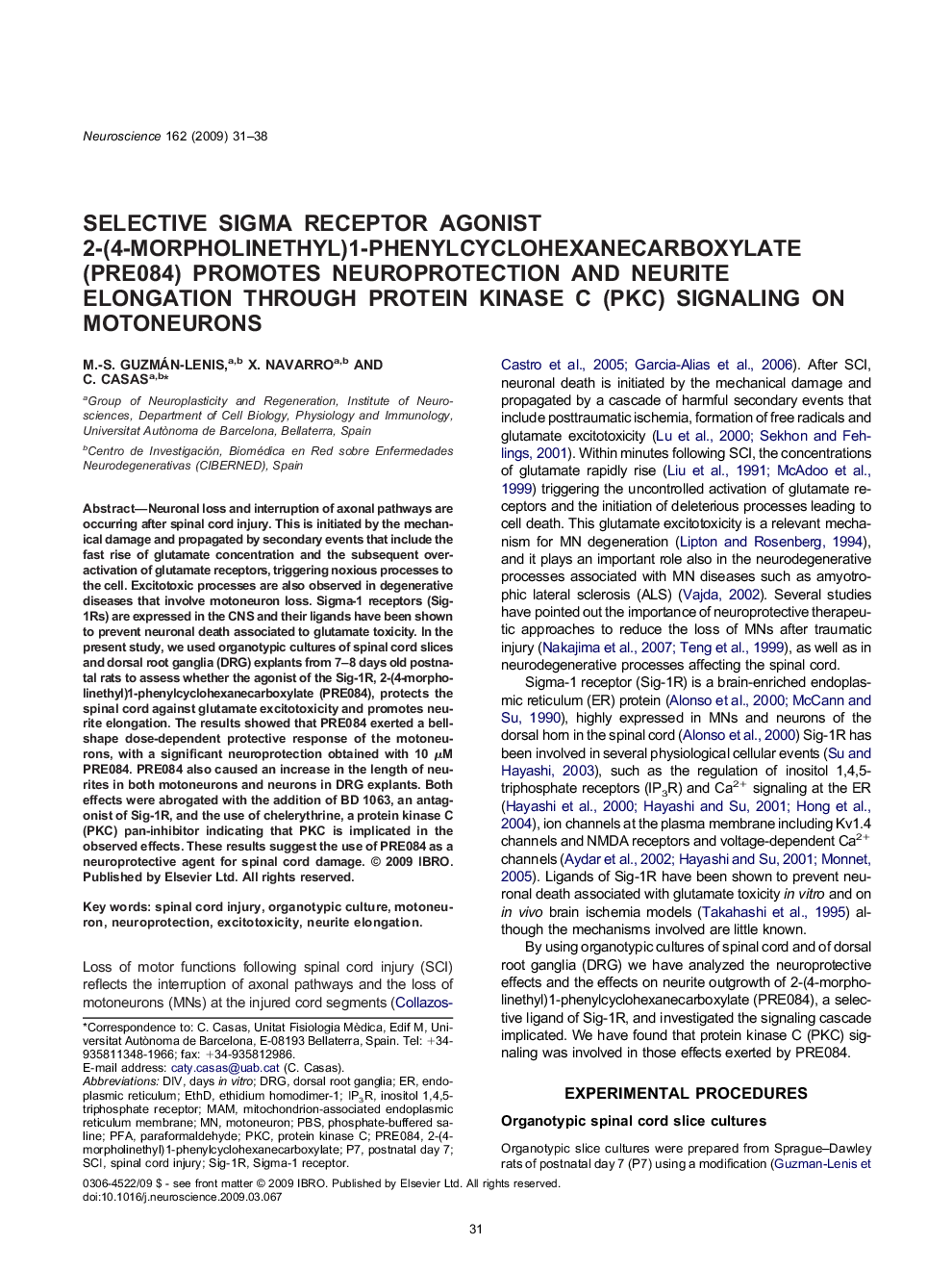| Article ID | Journal | Published Year | Pages | File Type |
|---|---|---|---|---|
| 4340365 | Neuroscience | 2009 | 8 Pages |
Neuronal loss and interruption of axonal pathways are occurring after spinal cord injury. This is initiated by the mechanical damage and propagated by secondary events that include the fast rise of glutamate concentration and the subsequent over-activation of glutamate receptors, triggering noxious processes to the cell. Excitotoxic processes are also observed in degenerative diseases that involve motoneuron loss. Sigma-1 receptors (Sig-1Rs) are expressed in the CNS and their ligands have been shown to prevent neuronal death associated to glutamate toxicity. In the present study, we used organotypic cultures of spinal cord slices and dorsal root ganglia (DRG) explants from 7–8 days old postnatal rats to assess whether the agonist of the Sig-1R, 2-(4-morpholinethyl)1-phenylcyclohexanecarboxylate (PRE084), protects the spinal cord against glutamate excitotoxicity and promotes neurite elongation. The results showed that PRE084 exerted a bell-shape dose-dependent protective response of the motoneurons, with a significant neuroprotection obtained with 10 μM PRE084. PRE084 also caused an increase in the length of neurites in both motoneurons and neurons in DRG explants. Both effects were abrogated with the addition of BD 1063, an antagonist of Sig-1R, and the use of chelerythrine, a protein kinase C (PKC) pan-inhibitor indicating that PKC is implicated in the observed effects. These results suggest the use of PRE084 as a neuroprotective agent for spinal cord damage.
